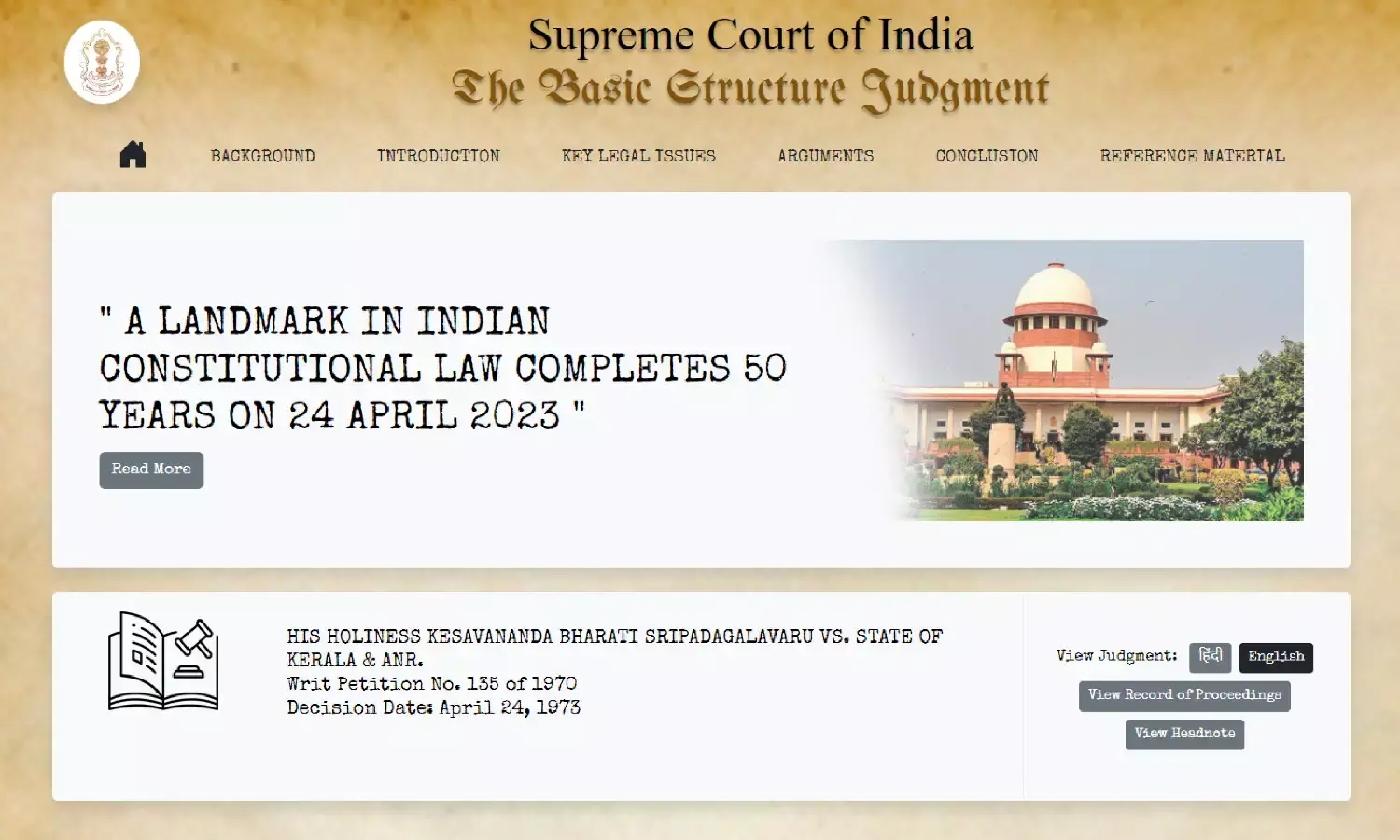50th Anniversary Of Kesavananda Bharati Case: SC Launches Web Page Containing Pleadings & Reference Materials Of The Case
The Supreme Court today dedicated a web page containing details of arguments, written submissions, reference material and the judgment in the historic Kesavananda Bharati case, which laid down the concept of the Basic Structure of the Constitution.
April 24 marks the 50th anniversary of the Kesavananda Bharati verdict which is titled Kesavanada Bharti Sripadagalavaru v. State of Kerala and Anr. (WP No. 135 of 1970), Date of Decision: April 24, 1973.
"We have dedicated a web page with all written submissions and everything related to the Kesavananda case for all world researchers to look at. The judgement was delivered on the same day 50 years ago on April 24, 1973," a bench headed by Chief Justice DY Chandrachud said.
The webpage is titled 'The Basic Structure Judgment' and mentions, "A Landmark in Indian Constitutional Law completes 50 years on April 24, 2023."
The page also comes with an option to view the judgment in Hindi along with English.
The page contains details such as i) Background which mentions the precedents to the Kesavanand Bharati Judgment, ii) Introduction which states the background information of the case and its origins, iii) Key legal Issues that were involved in the case including constitutional validity of the Kerala Land Reforms Act and the extent of Parliament's power to amend the Constitution, iv) Arguments of the parties involved, v) Conclusion which covers conclusion from majority judgments (7 Judges) and conclusion from dissenting judgments (6 judges), vi) Reference Material.
It also mentions the name of the Judges involved in the case and their views concerning the judgment.
The lawyers present in the courtroom hailed the move, saying it would help law researchers, students, and advocates immensely.
In a historic verdict of a 13-judge bench, the Apex Court, by a majority of 7:6, had laid down the concept of the Basic Structure of the Constitution and consequently, restricted the amending power of Parliament holding it cannot touch upon the basic structure of the Constitution.
In January this year, the Vice president of India had criticised the Supreme Court for using the doctrine of basic structure to strike down the constitutional amendment that introduced the National Judicial Appointments Commission. He had said that the Kesavananda Bharati judgment of 1973 set a bad precedent.
The Bombay High Court had held that fair criticism of a judgment is permissible, while dismissing a PIL against the Vice President for his remarks against the Basic Structure Doctrine.
Chief Justice D Y Chandrachud had in January called the basic structure doctrine a North Star that guides and gives direction to the interpreters and implementers of the Constitution when the path ahead is convoluted. He made the remark while delivering a lecture in Mumbai.












